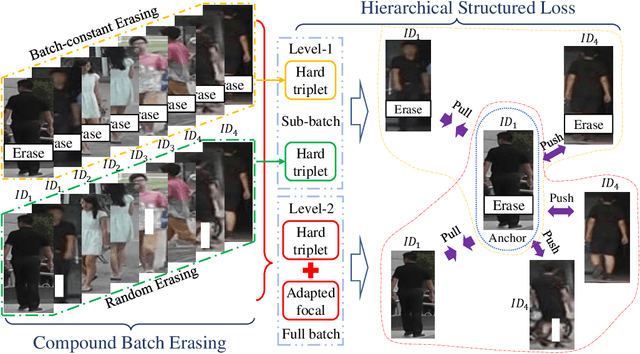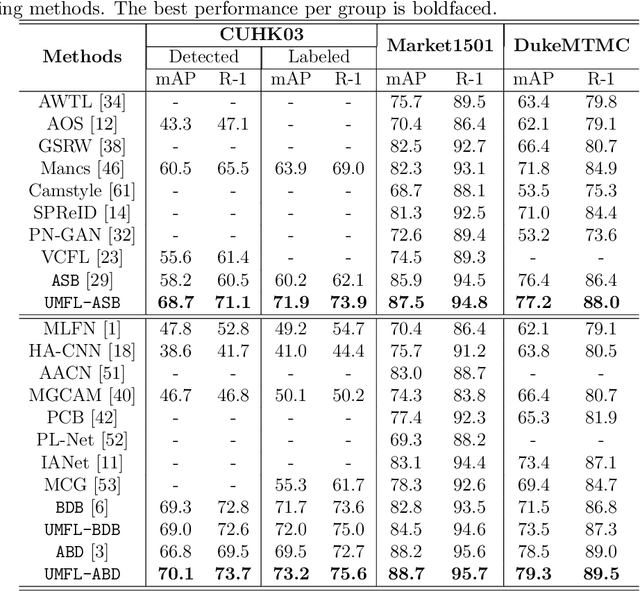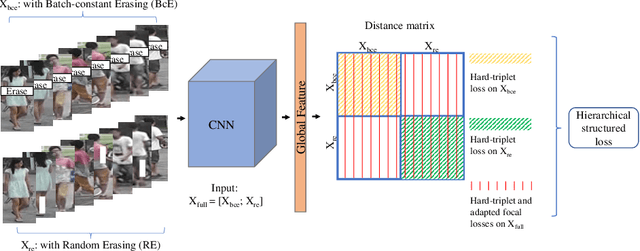Unified Multifaceted Feature Learning for Person Re-Identification
Paper and Code
Nov 21, 2019



Person re-identification (ReID) aims at re-identifying persons from different viewpoints across multiple cameras, of which it is of great importance to learn multifaceted features expressed in different parts of a person, e.g., clothes, bags, and other accessories in the main body, appearance in the head, and shoes in the foot. To learn such features, existing methods are focused on the striping-based approach that builds multi-branch neural networks to learn local features in each part of the identities, with one-branch network dedicated to one part. This results in complex models with a large number of parameters. To address this issue, this paper proposes to learn the multifaceted features in a simple unified single-branch neural network. The Unified Multifaceted Feature Learning (UMFL) framework is introduced to fulfill this goal, which consists of two key collaborative modules: compound batch image erasing (including batch constant erasing and random erasing) and hierarchical structured loss. The loss structures the augmented images resulted by the two types of image erasing in a two-level hierarchy and enforces multifaceted attention to different parts. As we show in the extensive experimental results on four benchmark person ReID datasets, despite the use of significantly simplified network structure, our method performs substantially better than state-of-the-art competing methods. Our method can also effectively generalize to vehicle ReID, achieving similar improvement on two vehicle ReID datasets.
 Add to Chrome
Add to Chrome Add to Firefox
Add to Firefox Add to Edge
Add to Edge